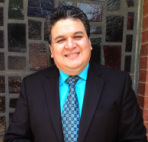Week before last, we sang during our evening worship service the old loved hymn, “How Firm a Foundation.” For many of you who were there that night, this familiar hymn was not too familiar because we used a different tune. Perhaps I will confuse some of you but I will share anyway about tunes in the hymns. Let me explain first about the “How Firm a Foundation” Sunday evening experience. Normally we sing this hymn with a melody called FOUNDATION (you can hum it right now if you want; do not worry, you will do fine), but Sunday evening we used a different tune called ADESTE FIDELES, which is the melody that we use for the loved Christmas hymn “O Come, All Ye Faithful.” It was a unique experience for many of you.
When a hymn is created, lyrics and melody collide to make a tool to worship God. The author writes the lyrics and a musician composes the melody. The name of the hymn normally comes from the first line of the lyrics, like “How Firm a Foundation.” You sing these words at the very beginning of the song. There are some exceptions like “Jesus Paid It All” where the first words are, “I hear the Savior say, Thy strength indeed is small.”
Now, when a composer creates the melody for a hymn, he puts a name to the melody as well and perhaps the name has some connection with the lyrics or not. FOUNDATION, the popular melody for “How Firm a Foundation” has connection with the lyrics; after all you sing “How Firm a foundation.” The opposite would be the old hymn called, “From All That Dwell Below the Skies” whose melody is called DUKE STREET, perhaps because the composer, John Hatton, lived on that street.
Hymns and spiritual songs are inspiration from God to His children like Isaac Watts and Charles Wesley, using talented musicians like Lowell Mason and Felix Mendelssohn, to create tools for worship. Let us sing with all our hearts and spirits the beloved psalms, hymns, and spiritual songs.
“I will sing praise with my spirit, but I will sing with my mind also” (1 Corinthians 14:15b – ESV).
In His service,
Israel

 RSS Feed
RSS Feed